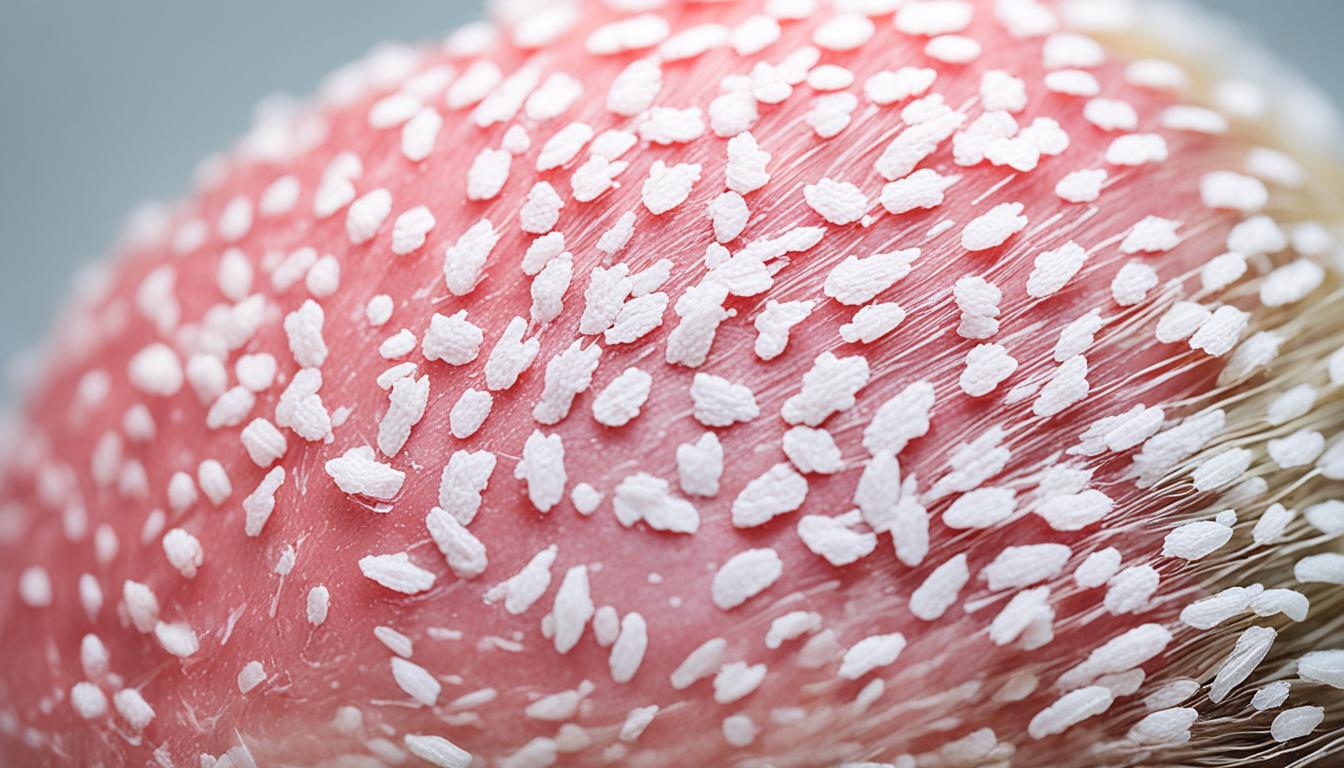Seborrheic dermatitis is a skin condition that comes and goes. It often makes parts of your skin that have many oil glands red and itchy. These areas can include your scalp, eyebrows, and chest. You might notice dandruff or scaling of the skin.
While we don’t know exactly what causes seborrheic dermatitis, we do have some ideas. It might be linked to making too much oil, having a fungal or bacterial infection, or changes in hormones.
If you have oily skin, you might be more likely to get it. Other things like stress, drinking alcohol, and some health conditions might play a role too.
To find out if you have seborrheic dermatitis, a doctor will look at your skin. They will consider what your skin looks like and how it feels. There are many ways to treat it. You might use special shampoos and creams. Or in some cases, you could try stem cell therapy.
Key Takeaways
- Seborrheic dermatitis is a chronic inflammatory skin disorder affecting areas with active sebaceous glands.
- Common symptoms include an itchy scalp, dandruff, redness, and scaling of the skin.
- The exact cause of seborrheic dermatitis is unknown, but factors such as increased sebum production, infections, and hormonal changes are believed to play a role.
- Diagnosis is typically based on clinical examination and consideration of the characteristic symptoms.
- Treatment options range from over-the-counter products to advanced therapies like stem cell therapy.
Symptoms of Seborrheic Dermatitis
Seborrheic dermatitis has different signs based on where it appears. Common ones are itchy scalp, dandruff, redness, and skin scaling.
Infants may get seborrheic dermatitis known as “cradle cap.” It shows as yellow, greasy scales on their heads. Usually, it goes away on its own within a few months.
It’s not just the scalp in adults; it may affect eyebrows, nose, and chest. Symptoms can come and go, with flare-ups and quieter times.
Some people barely notice the condition, while others feel very uncomfortable. They might also be self-conscious because of how it looks.
Factors Affecting Symptoms
Seborrheic dermatitis symptoms can get worse from certain conditions. Hot, humid weather is a trigger that can cause more itching and redness.
High stress can also make things worse. It can amp up the body’s response, which could mean more severe symptoms.
It’s essential to remember that not everyone experiences seborrheic dermatitis in the same way. For some, it’s mild, while for others, it can be intense.
Management of Symptoms
There’s no cure for seborrheic dermatitis, but you can manage its effects. Options for this include:
- Using special shampoos with ingredients like selenium sulfide, pyrithione zinc, or ketoconazole.
- Applying creams or ointments with corticosteroids or antifungal agents for itch and redness.
- Avoiding known triggers, such as harsh hair products, extreme temperatures, and stress.
- Keeping the skin clean and dry.
If standard treatments aren’t working, more advanced options like stem cell therapy might be an option.
Image:
Causes of Seborrheic Dermatitis
Seborrheic dermatitis is a skin issue caused by various things. The exact reason isn’t fully known, but we have some ideas.
Increased Sebum Production
Too much sebum, an oily substance our skin makes, can cause seborrheic dermatitis. People with oily skin might get this more.
Fungal or Bacterial Infections
Too much of the Malassezia fungus on the skin can lead to this condition. This fungus is always on our skin, but a lot of it can cause problems.
Hormonal Changes
Changes in hormones, like during puberty, can make this condition worse. Certain medical problems can also play a part.
This issue can sometimes run in families. Stress, drinking too much alcohol, and specific health problems can make it worse.
| Contributing Factors | Description |
|---|---|
| Increased Sebum Production | Excessive production of sebum by the sebaceous glands |
| Fungal or Bacterial Infections | Overgrowth of the Malassezia fungus or presence of certain bacteria on the skin |
| Hormonal Changes | Fluctuations in hormone levels, such as during puberty or in certain medical conditions |
| Genetics | Family history of seborrheic dermatitis |
| Stress | Increased stress levels leading to worsening of symptoms |
| Alcohol Consumption | Excessive alcohol intake can trigger or exacerbate seborrheic dermatitis |
| Certain Medical Conditions | Conditions like Parkinson’s disease, HIV/AIDS, and epilepsy may increase the risk of seborrheic dermatitis |
Stem Cell Therapy for Seborrheic Dermatitis
Stem cell therapy is a new hope for treating seborrheic dermatitis. It uses the power of stem cells to fix damaged skin cells. This helps the skin to heal and work properly again.
This type of therapy is still being researched. Yet, early signs say it could be an option for those who don’t get better with usual medicines. It offers hope by fixing the skin’s root problems.
Normal treatments only help with symptoms. But stem cell therapy goes to the core issue, working on why the skin has these problems. It helps the skin improve its natural balance and can lead to better and lasting health.
This new way of treating skin problems is a big step forward. It has the potential to greatly improve how we treat seborrheic dermatitis. With more studies, it could become a key treatment for many people dealing with this issue.

